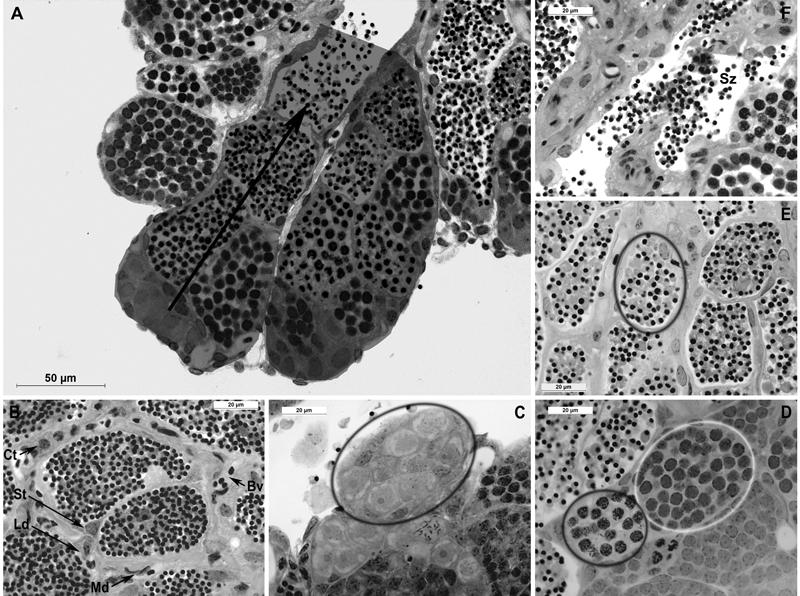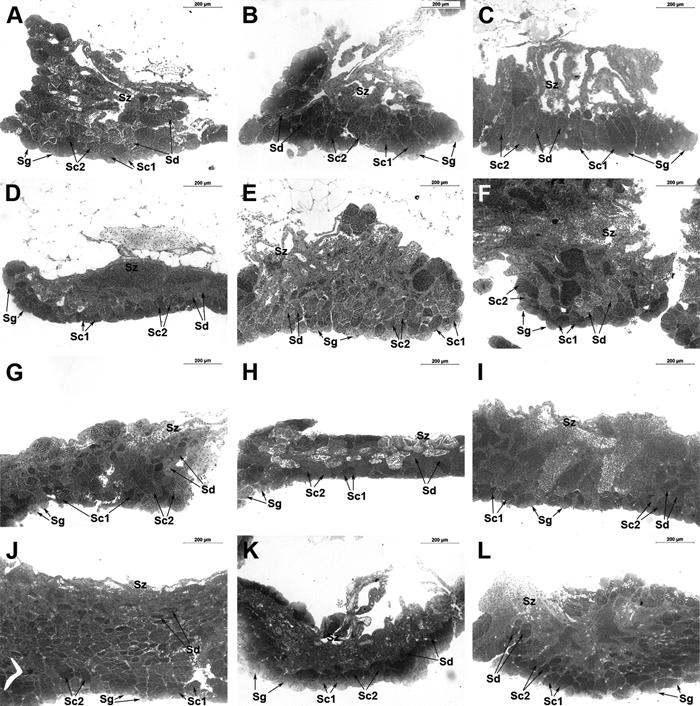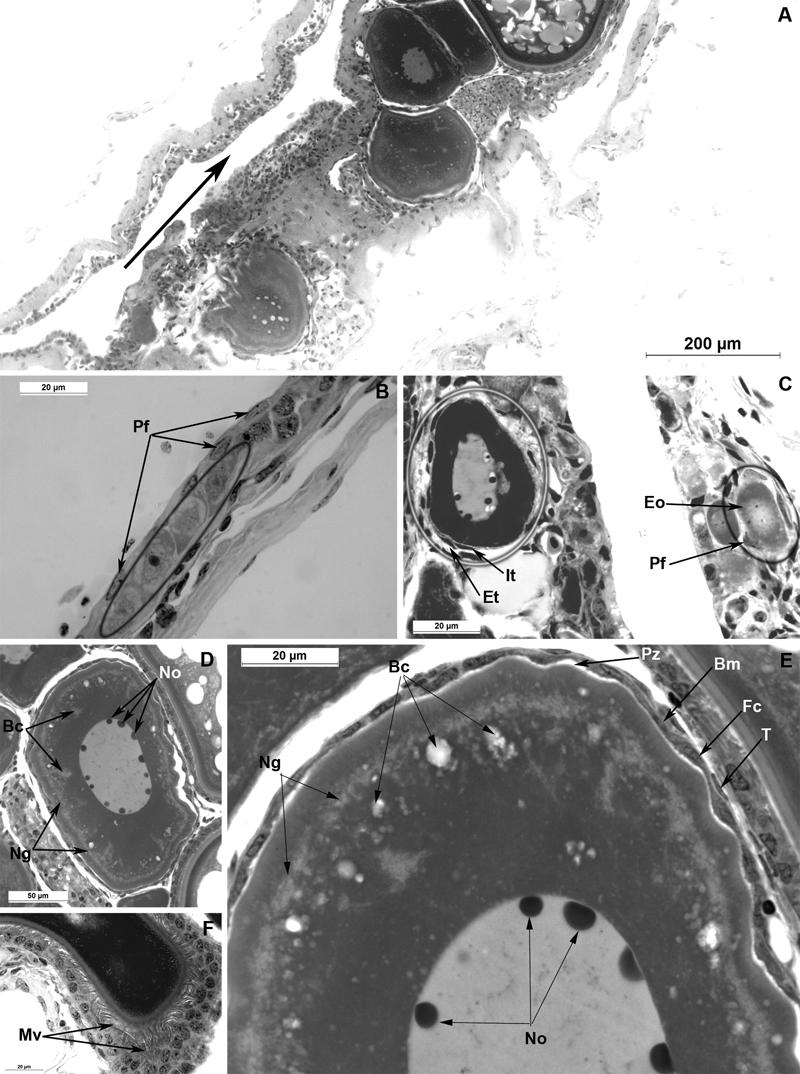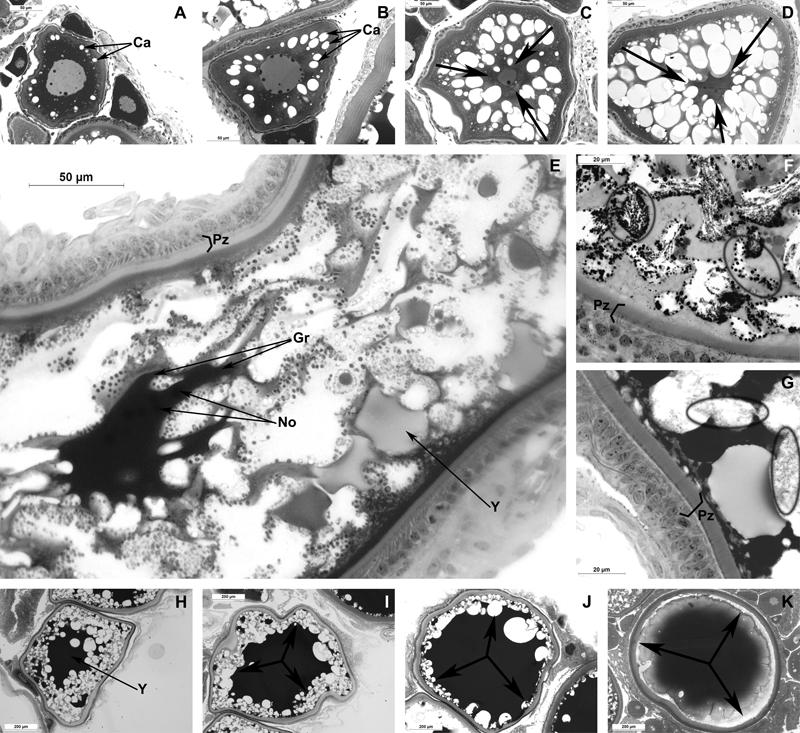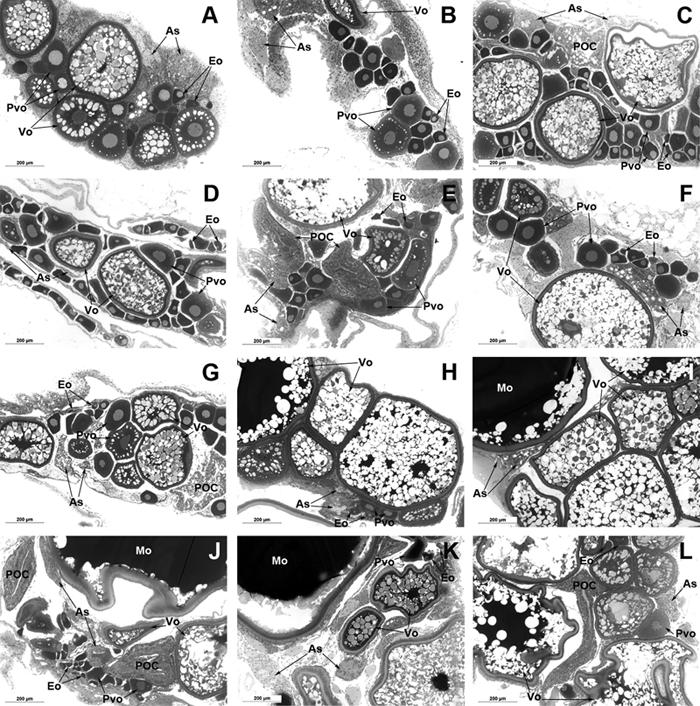The comprehension of the reproductive cycle allows to understand which are the morphological changes that develop in the gonad during this interval. Thus, many studies have been undertaken in order to describe and classify the stages of gonadal development and reproductive status of Neotropical fishes. For this purpose, specimens of Melanorivulus aff. punctatus were collected in a permanent dam in Chapada dos Guimarães, Mato Grosso, Brazil. The gonads were prepared for analysis by light microscopy. The oogenesis and spermatogenesis have been described, characterizing the stages of gonadal development, together with assessments of the gonadosomatic ratio, germ cell count and verification of variation of mature oocytes in females. Throughout the year the male gonads presented themselves as capable of reproducing, characterized by the presence of undifferentiated and differentiated spermatogonia, spermatocytes organized into cysts, spermatids in cysts whose wall was thicker and the spermatozoa was free in the lumen and the duct. This can indicate a continuous reproductive cycle with split spermiation. The females had gonads in the development stage from May to September with undifferentiated and differentiated oogonias and early oocytes always facing the lumen, abundant pre-vitellogenic and vitellogenic oocytes and some atresias. In the phase capable of spawning, observed from October to March, the mature oocytes are abundant, there are many post-ovulatory complexes and some atresia in advanced stage. The regression, observed in some individuals from February to April, is characterized by ovaries with many atresias and post-ovulatory complexes. The same results were found in the quantitative assessments. Therefore, it may be characterized as discontinuous cycle with split spawning. Thus, the reproductive cycle of this species can be characterized as continuous for males and discontinuous for females, which have a most intense phase of reproduction from October to March. However, both have fractional release of gametes.
Gonadossomatic ratio; Histology; Oogenesis; Spermatogenesis

